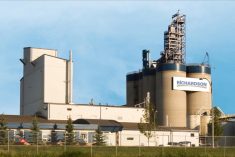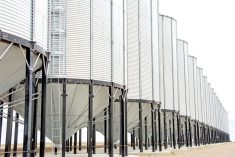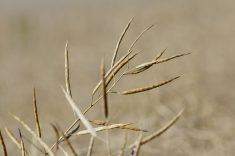CNS Canada — The commodity trade has turned its focus forward following fresh data from Statistics Canada.
“The acreage numbers are important, but this game right now is all about weather,” said Mike Jubinville of ProFarmer Canada, naming spring wheat as one crop the market had been closely watching.
While estimates for all wheat seeded by Canadian farmers in 2017 are down 3.7 per cent from 2016 to 22.4 million acres, the area seeded to spring wheat is expected to rise 2.5 per cent to 15.8 million acres, Statistics Canada said in its principal field crop areas survey, conducted between May 26 and June 12.
Read Also

U.S. grains: Soy futures post biggest monthly gain in nearly five years on China trade optimism
U.S. soybean futures climbed to a 15-month high and posted their biggest monthly gain in nearly five years on Friday following a rally fueled by the prospect of revived exports to China.
Despite the anticipated increase in spring wheat area, U.S. futures rallied in early activity on Thursday.
“Yield is what makes or breaks crops,” Jubinville said, adding that traders have been focusing on dryness in the Dakotas and Montana, which extended up into areas of Western Canada, namely key growing areas in Saskatchewan.
More recent forecasts show those dry areas expanding into parts of eastern Alberta throughout July.
“So the worry of the marketplace is starting to extend,” Jubinville said.
Crops are especially vulnerable to heat stress this year due to the late start to seeding in Western Canada, meaning a larger portion of the crop is going to be in its reproductive phase and vulnerable to hotter, drier weather.
The canola number came in higher than previously reported by the government agency, reaching record levels, yet canola futures also rallied in early activity on Thursday.
Variability and concerns about crop conditions in Western Canada were factors in the support, while a tightening supply situation limited losses for now.
Canadian farmers reported seeding a record-high 22.8 million acres of canola in 2017, up 12.1 per cent from the 20.4 million acres reported in 2016, Statistics Canada said.
The market needs a 19.5 million-tonne crop to satisfy demand components amid the tightening old-crop situation that’s materializing, Jubinville said.
“I think it [canola acres] could be viewed as kind of neutral — it could be viewed as slightly negative longer-term,” said Jerry Klassen, manager of the Canadian office of Swiss-based grain trader GAP SA Grains and Produits.
Nationally, the total area seeded to barley fell 9.7 per cent from 2016 to 5.8 million acres in 2017, Statistics Canada said.
The barley number can be viewed as slightly bullish, as the figure came in below analyst expectations, Klassen said.
“I think that this shows that farmers stuck with their original plan with the barley,” he said.
Acreage seeded to oats rose 13.6 per cent from 2016, to 3.2 million acres in 2017, StatsCan data said.
While higher than year-ago levels, the oat number was at the low end of trade expectations.
“Some of that had to do with seeding delay issues and acres that just couldn’t get planted in what was a pretty wet area,” Jubinville said.
He named northeastern Saskatchewan, a prominent oat-growing area, as one that may have spurred some of the lower seeded area.
Pulse crop area held mostly stable, with no “real new story.”
— Jade Markus writes for Commodity News Service Canada, a Winnipeg company specializing in grain and commodity market reporting. Follow her at @jade_markus on Twitter.
Table: StatsCan principal field crop area survey against trade estimates, in millions of acres.
| Pre-report | StatsCan, | StatsCan | ||
| estimates. . | June, 2017-18. . | March, 2017-18. . | 2016-17 | |
| Barley | 5.800 – 6.400 | 5.771 | 5.880 | 6.390 |
| Canola | 21.000 – 22.700 | 22.837 | 22.387 | 20.367 |
| Flaxseed | 0.900 – 1.100 | 1.040 | 1.115 | 0.935 |
| Lentils | 4.000 – 5.000 | 4.405 | 4.385 | 5.860 |
| Oats | 3.200 – 3.500 | 3.220 | 3.419 | 2.834 |
| Peas | 3.800 – 4.200 | 4.093 | 3.989 | 4.239 |
| Total wheat* | 21.500 – 23.200 | 22.361 | 23.182 | 23.212 |
| Durum | 4.900 – 5.100 | 5.205 | 5.145 | 6.190 |
* – Total wheat = Spring wheat + durum wheat + winter wheat remaining after winterkill












